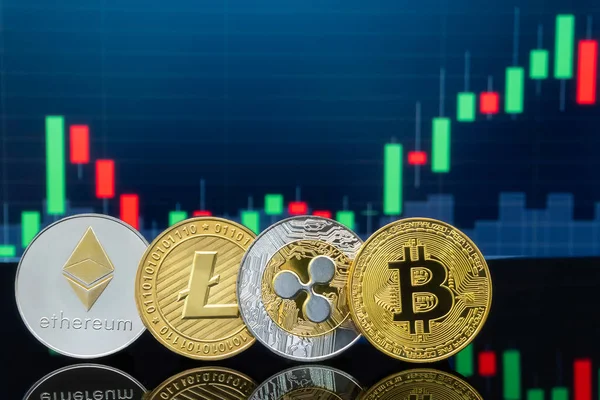Abstract.
Bitcoin is the cryptocurrency with the highest market capitalisation, and numerous research have looked at its significance in financial markets. In this paper, we add to the existing body of knowledge by analysing Bitcoin behaviour and the impact of investor sentiment, S&P 500 returns, and VIX returns on Bitcoin volatility using GARCH and EGARCH models. The findings indicate that Bitcoin volatility is more unstable during speculative periods. During calm periods, S&P 500 returns, VIX returns, and sentiment all have an impact on Bitcoin volatility.

1. Introduction:
Bitcoin is a virtual currency that employs the SHA-256 cryptographic hash method and a mix of public and private keys, eliminating the need for a central authority to verify the specifics of each economic transaction (Grant and Hogan, 2015). Trading in this cryptocurrency has grown increasingly popular, and bitcoin futures were introduced in December 2017 on the Chicago Board Options Exchange (CBOE) (Corbet et al., 2018a). As a result, Bitcoin has emerged as a ‘hot topic’ in financial research, particularly when it comes to investor sentiment. Previous study has shown that investor sentiments taken from news or blogs (Karalevicius et al., 2018; Kjaerland et al., 2018), social networks such as Twitter (Georgoula et al., 2015), and investor attention from Google (Dastgir et al., 2019) influence Bitcoin. Consequently, we intend toclarify the role of Bitcoin in the financial market and its relationship with investor sentiment.
Although Bitcoin was designed as an alternative currency, it is also used as an asset (Baur et al., 2018). In this regard, various authors examined Bitcoin’s position in stock markets as an asset or hedging instrument, as well as its link with other market factors like as the Standard & Poor’s 500 Index (S&P 500 Index) and the Volatility Index (VIX). While Bartos (2015) discovered that Bitcoin’s price matches the efficient market hypothesis and may be regarded an asset, Lahmiri et al. (2018) uncovered solid evidence opposing the efficient market theory. In terms of hedging capacities, Bouri et al. (2017a) determined that Bitcoin Markets are volatile and cannot be used as a hedging instrument. In contrast, Dyhrberg (2016a; 2016b) demonstrated that Bitcoin, like gold and the US dollar, has hedging capabilities and trades at lower spreads than stocks on major exchanges (Dyhrberg et al.). Moreover, Al-Yahyaee et al. (2019), Bouri et al. (2017c), Urquhart and Zhang (2019), Shahzad et al. (2019), and Chan et al. (2019) discovered evidence of Bitcoin as a hedging instrument. Nonetheless, Klein et al. (2018) determined that Bitcoin responds asymmetrically to market shocks, comparable to precious metals. In this way, there is some evidence that Bitcoin is tied to the S&P 500 Index (Georgoula et al., 2015; Conrad et al., 2018; Kjaerland et al., 2018). Erdas and Caglar, 2018; Chan et al., 2019) and to market uncertainty measured through the VIX Index (Bouri et al., 2017b; 2017c).
As a result, the goals of this paper are to investigate: (1) whether social network sentiment and the stock market (S&P 500 Index) affect Bitcoin volatility; (2) whether social network sentiment and stock market volatility (VIX Index) influence Bitcoin volatility; and (3) Bitcoin volatility behaviour.
We utilised EGARCH models to supplement GARCH model results and test the pattern of Bitcoin volatility since they guarantee the positive sign of the variance without imposing coefficient constraints. Since it has been proved that Bitcoin can be a speculative asset (Baek and Elbeck, 2015) or a hedging instrument (Dyhrberg, 2016a; 2016b; Bouri et al., 2017c), we have examined the
Bitcoin volatility throughout different time periods. To do this, daily data from the S&P 500 Index, VIX, and Bitcoin were used, while investor sentiment was extracted using the Standford CoreNLP (Manning et al., 2014) software from StockTwits.com, a finance-focused social network. This sentiment measure is commonly utilised in research because of its 80.7% accuracy in capturing the impacts of negation and its scope for both positive and negative terms (Socher et al., 2013).
The findings indicate that financial markets and social networks
2. Data and variables
To conclude the analysis The S&P500 Index, VIX Index, Bitcoin pricing, and emotion towards the S&P500 Index were all used. The S&P500 Index reflects the market because it includes 500 businesses from various industries, and it has been utilised in multiple Bitcoin behavioural research (Conrad et al., 2018; Kjaerland et al., 2018; Erdas and Caglar, 2018; Chan et al., 2019). The VIX indicator is a volatility indicator based on the S&P500 Index that monitors market volatility. Several writers utilise this index to evaluate market volatility in their models (Piñeiro et al., 2017; Bouri et al., 2017c). Finally, unlike other writers who have used sentiment about bitcoin (Karalevicius et al., 2018), we refer to the sentiment of comments regarding the S&P500 Index to
The data for the S&P500 Index was obtained from the Nasdaq website, which is the official site of the Nasdaq stock exchange. VIX data was obtained from the CBOE website, the official site of the CBOE options market, which includes the VIX as one of its primary indices. Following prior study, Bitcoin data were gathered from the website coindesk.com (Bouri et al., 2017; Chan et al., 2019; Ma and Tanizaki, 2019). Sentiment data was collected from Stocktwits messages using the Stanford CoreNLP tool (Manning et al., 2014). Stocktwits is a financial social network where users can publish stock market-related messages labelled with “cashtags” (such as $SPX). The data was gathered from January 4, 2016, to September 30, 2019, totalling 943 trade days.
The variables were calculated as shown below. The returns for the S&P500 Index, VIX, and Bitcoin were calculated using the formula (1), where Pxt represents the closing prices at time t.
The Standford Core NLP uses a five-point Likert scale to assess investor sentiment. A score of -2 indicates a very negative sentiment, a score of 0 indicates neutral sentiment, and a score of 2 indicates a very positive sentiment. The daily sentiment average was calculated as shown below: (2).